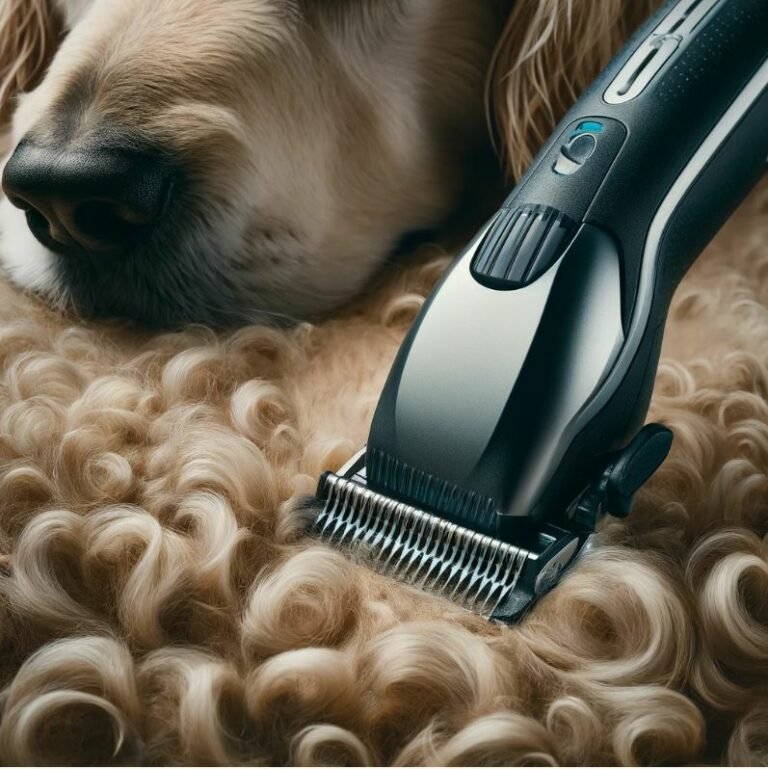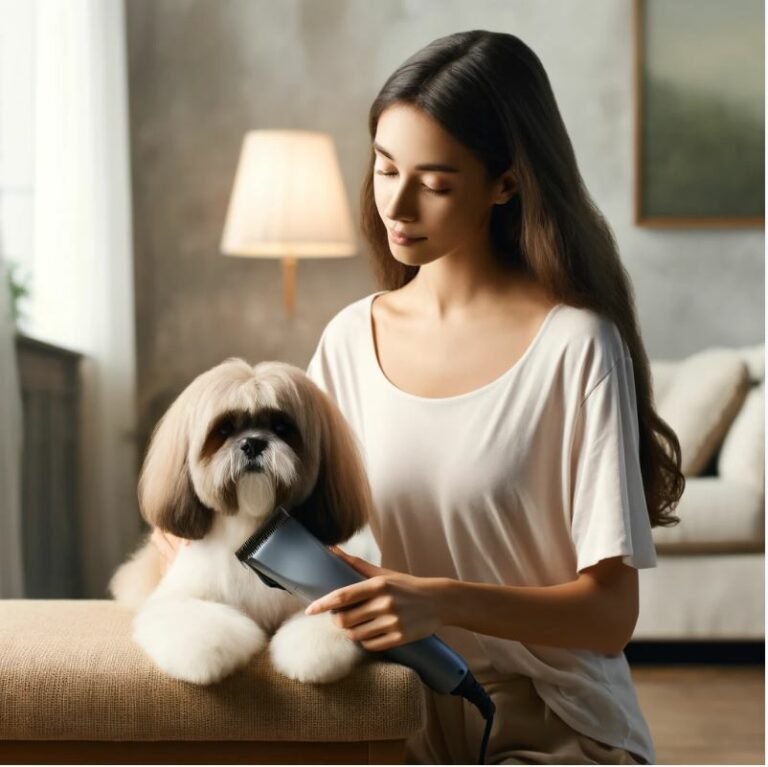Every dog should NOT be shaved!
In fact, shaving certain breeds can cause irreparable damage to the coat – which is a significant problem, since certain breeds need their coat as an insulator and protection.
And even if your pet falls into the category of breeds that can be shaved, you should consider leaving the coat in a longer length, commonly referred to as a “puppy cut.”
Talk to your grooming professional to create a plan that fits your budget and lifestyle to ensure your pet receives the proper grooming services for comfort and health.
And if you groom your pet yourself, research the grooming needs of your specific breed(s).
Here is an overview of some common categories of coat types in dogs:
Thick Double Furs
Many breeds have a double coat, but certain breeds, such as Huskies, Samoyed or Pomeranian, have a thick double coat with special characteristics unique to these types of dogs.
Dogs with these types of coats should be kept in cool environments and brushed regularly so that their coats can function as insulators and temperature regulators.
This type of coat should never be shaved, as it breaks the coat’s natural life cycle and damages its protective functions.
However, these coats can develop tangles if they are not brushed and combed regularly; fortunately, these regular brushing sessions will also “open up” the coat, which helps with air circulation and keeps your pet from shedding excessively in the house.
Single Furs (Curly and Silky)
Dogs with single coats can be curly, as we see in Poodles, or silky, as we see in a Maltese.
The defining characteristic of most single coats is that they are “indeterminate” and continue to grow until you trim them.
The best grooming plan for our single-layer pets is to keep them on a regular grooming schedule (with regular brushing between full grooming sessions) so that their coats can be kept at a manageable length without tangles.
In the event that tangles become too severe and close to the skin, these coats may need to be shaved so that the coat can “reset” and begin to grow again.
For single-layer breeds, shaving should be avoided unless necessary, but fortunately these coats can be shaved without permanent damage to the coat.
Silky Furs
Dogs with silky coats, such as the Yorkshire Terrier or Afghan Hound, have long, fine hairs similar to our long, silky single coats.
Although some breeds with silky coats are kept in a natural silhouette and do not require trimming of their coats, it is important to brush these coats regularly to prevent tangles.
Yorkshire Terriers (also called “Yorkies”) are a common breed in groomers, with options ranging from puppy cuts to natural falling coat styles, and shaving recommended only when necessary.
Rough-haired Furs
Dogs with rough-haired coats, such as Norwich Terriers or Irish Wolfhounds, have a coarse outer coat and a soft, silky undercoat.
The proper way to care for these types of coats is to “pluck” the outer coat when it is ready (also called stripping or hand stripping) to encourage new growth.
By mimicking this natural process, the coat grows back thicker and healthier, protecting the dog from the elements.
Shaving this type of coat is not recommended because it can soften the coat’s natural texture and reduce its protective properties.
Because plucking is an expensive and skilled service, many owners choose to have their wirehaired pets cut or trimmed, and while this is not ideal for skin and coat health, these breeds can tolerate shearing reasonably well compared to other types of double coats.
Shorthaired Furs
Our short-haired dogs can range from our basic short-haired coat, as you would see in a Labrador Retriever, to the smooth coat seen in a Doberman Pinscher.
Although these types of coats usually require less intensive grooming, they are double-layered and shed to varying degrees.
Shorthaired breeds require brushing appropriate to the coat (such as a slicker brush for a Lab or a rubber brush for a Dobie), and these coats should never be shaved unless under the supervision of a veterinarian.
Mixed Furs
Many dogs are a mix of different breeds and therefore different coat types.
Care of mixed breeds can be more complex depending on which coat characteristics are most dominant and can sometimes require a combination of grooming techniques to keep their coats healthy and in good condition.
Consult a professional if you are unsure what the proper grooming procedures are for your mixed breed.
Plucked Furs
Certain breeds, such as the Puli and Komondor, are known for their unique plucked coats, where the coat can be encouraged to grow into long, dreadlock-like strands.
These coats require much dedication to grooming, as the folds must be kept clean and separated at the roots of each fold.
These folds also require trimming, as the hair of these breeds continues to grow (and in many ways is similar to our single-layered curly breeds).
Although a plucked Puli and a Standard Poodle look very different from the outside, their coat texture is similar, meaning plucked breeds can tolerate shaving if necessary.
Ready to trim?
We have tools to help you on your trimming journey! Click here!




